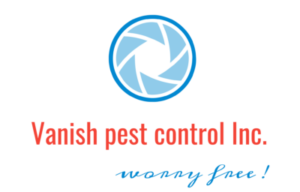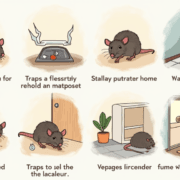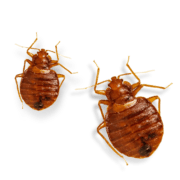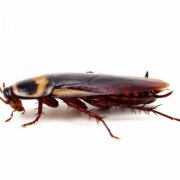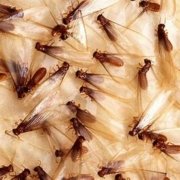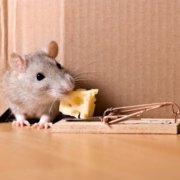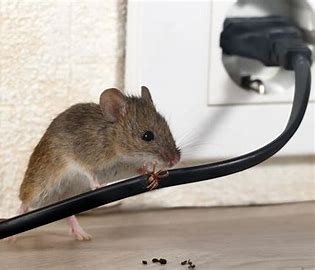The Importance of Hiring Expert Pest Control Services
Introduction to Pest Control
Pest control is a critical aspect of maintaining both residential and commercial spaces, involving the management and elimination of various unwanted insects and organisms that can disrupt our environments. This discipline encompasses a range of strategies aimed at preventing or eradicating pests and ensuring the safety and health of occupants. Pests typically include rodents, insects such as ants, cockroaches, and termites, as well as larger animals like raccoons or bats, each presenting unique challenges and requiring tailored approaches for effective control.
The significance of pest control extends beyond mere aesthetics; the presence of pests can pose serious health risks and lead to structural damage. For instance, termites can compromise the integrity of wooden structures, while rodents may contaminate food sources and transmit diseases. This is particularly concerning in homes where children and pets may be more vulnerable to illnesses caused by these pests. Additionally, businesses often face severe repercussions from pest infestations, including financial losses, damage to reputation, and even legal liabilities if they fail to maintain a pest-free environment.
Regular pest management practices are essential to prevent infestations. This involves not only the targeted elimination of existing pests but also the implementation of preventative measures such as sealing entry points, managing waste, and ensuring proper sanitation. Utilizing expert pest control services provides the added advantage of thorough inspections, identifying potential pest entry points, and recommending effective long-term solutions, all while ensuring the safety of both occupants and the environment through the responsible use of pest control methods.
In summary, understanding the importance of pest control is crucial for maintaining a healthy living or working space. By addressing pest problems proactively through expert services, individuals and businesses can safeguard their properties and contribute to a safer environment.
Understanding Pest Infestations
Pest infestations are an issue that can affect homes, businesses, and outdoor environments. They typically occur when conditions become favourable for pests to thrive. Factors such as poor sanitation, easy access to food and water, and suitable shelter contribute to the proliferation of these unwanted guests. For instance, homes that are not regularly cleaned or that have accumulated clutter often attract pests such as cockroaches, rodents, and ants, which seek out these environments for survival.
Recognizing the typical signs of an infestation is crucial for prompt intervention. Common indicators include droppings, gnaw marks on food packaging, nests, or physical sightings of the pests themselves. Additionally, unpleasant odours or unexplained damage to property could signal an underlying problem. Ignoring these signs can lead to a full-blown infestation, which poses several risks.
Different types of pests can have varying effects on health, property, and the environment. For example, rodents can spread diseases through their droppings and urine, while termites are known for causing extensive damage to wooden structures, thereby compromising the structural integrity of buildings. Furthermore, some insects, such as mosquitoes, can transmit harmful pathogens, putting the health of residents at risk. The presence of certain pests can also lead to contamination of food supplies, which can have serious health repercussions.
Moreover, pests can impact local ecosystems. Non-native species, when introduced, can disrupt existing biological balances, leading to the decline of native populations. As such, understanding the nuances of pest infestations is invaluable for effective pest management. This understanding reinforces the importance of hiring expert pest control services to address these infestations comprehensively and prevent future occurrences.
The Risks of DIY Pest Control
While many homeowners attempt to manage pest infestations on their own, the dangers associated with DIY pest control can be significant. One of the foremost risks involves the improper use of pesticides. Many available products contain hazardous chemicals that can pose serious health threats to humans and pets if not used according to instructions. Mishandling these substances can lead to toxic exposure, resulting in a variety of health complications such as respiratory issues, skin irritations, or even long-term effects with prolonged exposure.
In addition to health risks, DIY pest control often leads to incomplete eradication of infestations. Homeowners may lack the knowledge and experience necessary to accurately identify the type of pests and their breeding grounds. Without this understanding, it is easy to overlook critical areas where pests breed and thrive, allowing the infestation to persist or even proliferate. This lack of thoroughness can result in greater frustration and prolonged discomfort, as pests may return or multiply faster than the homeowner can manage.
Moreover, the financial implications of unsuccessful DIY pest control efforts cannot be understated. Initially, homeowners may feel that attempting to manage pests independently is cost-effective; however, the reality is often quite different. Costs can accumulate through repeated purchases of pesticides, traps, or other control measures in a futile attempt to address the infestation. Furthermore, inadequate treatment can ultimately lead to wider infestations, requiring professional services that might have been avoided with proper pest management measures. In the long run, relying solely on DIY solutions can be far more expensive than hiring expert pest control services to ensure a complete and effective treatment.
Benefits of Professional Pest Control Services
Hiring expert pest control services offers numerous advantages that extend beyond simple pest removal. One major benefit is efficiency; professionals are trained to quickly identify and address pest problems, saving homeowners valuable time and effort. While DIY methods may seem appealing, they often lead to repeated infestations or incomplete eradication, ultimately resulting in more costly and time-consuming solutions. With expert knowledge and advanced techniques, pest control experts can effectively eliminate pests on the first try.
Additionally, pest control specialists possess a high level of expertise in pest identification. Distinguishing between various pest species is critical as each type requires a different management strategy. Professionals undergo extensive training and education to understand pest behaviour, biology, and life cycles. This understanding enables them to select the most effective treatments tailored to the specific pest problem, ensuring not just immediate relief but also long-term solutions.
Moreover, experts provide tailored solutions that are not only effective but also environmentally responsible. They utilize integrated pest management (IPM) strategies, which combine biological, cultural, and chemical controls to minimize risks to human health and the environment. By assessing the unique circumstances of each situation, pest control professionals can devise a customized plan that addresses the root cause of the infestation, rather than just the symptoms.
Another significant advantage of hiring professional pest control services is their focus on long-term prevention strategies. Rather than offering short-term fixes, these experts emphasize maintaining pest-free environments through ongoing monitoring and preventive treatments. They educate clients about preventative measures, including structural modifications and lifestyle changes, to reduce future infestations. This proactive approach fosters a healthier living space, ultimately enhancing the overall quality of life for homeowners.
What to Look for in a Pest Control Expert
When it comes to selecting a pest control expert, various key factors should be meticulously considered to ensure effective pest management. First and foremost, one should verify the credentials of any pest control service. This includes checking licenses and certifications, which ensure that the professionals are qualified and adhere to industry regulations. A credible pest control expert will possess relevant qualifications that demonstrate their competency in handling various pest issues safely and effectively.
Another crucial factor is the importance of reading customer reviews. Feedback from previous clients can provide valuable insights into the quality of service, effectiveness, and customer satisfaction. Searching for ratings across various platforms, such as social media, online review sites, and the company’s website, can also help identify patterns in service quality. High ratings and positive testimonials can indicate reliability and professionalism, while consistently negative reviews may signal potential issues.
Furthermore, understanding the variety of services offered by a pest control company is essential. Some companies may specialize in specific types of pests, such as rodents or termites, while others may offer comprehensive pest management solutions. Inquiring about the company’s approach, techniques, and the types of infestations they typically handle can aid in making an informed choice tailored to your specific needs.
Moreover, it is increasingly important to prioritize environmentally friendly practices when choosing a pest control expert. Many consumers are becoming more aware of the potential hazards that traditional pest control methods pose to human health and the environment. An expert in pest control should use eco-friendly products and techniques that mitigate risks while effectively addressing infestations. Ensuring that the pest control expert aligns with your values can foster a safer and more sustainable approach to pest management.
The Process of Professional Pest Control
Professional pest control services https://vanishcanada.com/ utilize a systematic approach to effectively manage and eliminate pest infestations. The first step in this process is the initial inspection, where experts thoroughly examine the premises to identify the type and extent of the pest problem. This inspection often involves checking various areas such as basements, attics, and the exterior of the property. By doing so, pest control professionals gain insight into potential entry points as well as conditions conducive to pest activity.
Following the inspection, the pest control experts formulate a comprehensive treatment plan tailored to address the specific needs of the property. This plan may include recommendations for sanitation, structural repairs, and the implementation of pest prevention strategies, in addition to the actual treatment methods. Treatment plans are designed considering the type of pests present and the unique characteristics of the environment, ensuring both effectiveness and safety.
Next, professionals proceed with the application of products, which may range from environmentally safe solutions to more robust chemical treatments, depending on the severity of the infestation. Trained technicians apply these products through various methods such as sprays, baits, or traps, while ensuring compliance with safety guidelines to protect residents, pets, and the environment./https://vanishcanada.com/
An essential aspect of the pest control process is the follow-up procedures. After the initial treatment, professionals typically schedule follow-up visits to monitor the situation. These check-ins allow experts to assess the effectiveness of the treatment and make any necessary adjustments. Additionally, pest control service providers often educate clients about preventive measures to help minimize future infestations, thereby promoting long-term pest management solutions.
Preventative Measures and Education
Homeowners can take several proactive steps to prevent future pest infestations, thereby safeguarding their properties and ensuring a higher quality of life. One of the primary methods of prevention is implementing effective sanitation practices. This includes regularly cleaning kitchens, removing food debris, and storing food in sealed containers. By eliminating potential food sources, homeowners can significantly reduce the likelihood of attracting pests.
Moreover, maintaining a clean and clutter-free environment plays a crucial role in pest deterrence. Gardens, basements, and attics should be regularly decluttered and organized, as such spaces can become havens for a variety of pests, including insects and rodents. Regular garbage disposal and ensuring that dumpsters are tightly sealed also contribute to an effective management strategy against infestations.
Landscaping is another vital aspect of pest prevention. Homeowners are encouraged to maintain their gardens by trimming overgrown bushes and keeping grass short. This not only enhances the aesthetic appeal of the home but also reduces hiding spots for pests. Additionally, creating a buffer zone of gravel or stones around the home can discourage insects from venturing too close to the foundation.
Furthermore, regular maintenance checks are essential for pest control. Homeowners should inspect their properties for cracks, gaps, or holes that could be entry points for pests. Utilizing caulk or other sealing materials to address these vulnerabilities can significantly minimize risks. Collaborating with pest control professionals can also provide homeowners with valuable insights into preventative measures tailored specifically to their property.
By incorporating these preventative measures and staying educated on pest management practices, homeowners can protect their homes more effectively. Employing the expertise of professionals for ongoing education can further enhance their ability to maintain a pest-free environment consistently.
Cost Considerations for Pest Control Services
When it comes to pest management, the financial ramifications of hiring expert services are a key consideration for property owners. The average costs for pest control services can vary significantly based on several factors. On average, homeowners may expect to pay anywhere from $100 to $300 for treatment, although prices can escalate for larger infestations or specialized services. Factors influencing the price typically include the type of pest being addressed, the size and location of the property, and the severity of the infestation.
One crucial aspect to keep in mind is that many companies offer customized plans tailored to the specific needs of the client. This could mean a one-time treatment for a minor problem or a more comprehensive program of regular maintenance to prevent future infestations. Additionally, the initial costs of hiring expert pest control technicians should be weighed against the potential expenses associated with untreated pest issues. For instance, a significant infestation can lead to structural damage, health risks, and the costly replacement of damaged goods, which may end up costing far more than the preventive approach of a proactive pest control service.
Investing in professional pest control can indeed yield substantial long-term savings. By addressing pest problems early and effectively, property owners can mitigate the risks of extensive damage that often incur higher repair costs. Furthermore, expert technicians not only eliminate existing pests but also provide valuable insights into preventing future ones, optimizing the cost-effectiveness of their services.
In essence, considering both the upfront costs and long-term benefits of hiring professional pest control services leads to a more informed decision. This financial strategy ultimately contributes to safeguarding one’s property and maintaining a pest-free environment.
Conclusion
In conclusion, hiring expert pest control services is crucial for maintaining a healthy and safe environment in both residential and commercial settings. The complexities involved in effective pest management often require specialized knowledge and experience that most individuals may not possess. Professional pest control technicians are equipped with the necessary tools and expertise to identify, treat, and prevent infestations effectively. This not only leads to immediate eradication of unwanted pests but also ensures long-term solutions that safeguard properties from future invasions.
The benefits of engaging with professional pest control extend beyond mere extermination. Expert services often include comprehensive inspections that identify potential problem areas, allowing for proactive measures to be taken before infestations occur. Additionally, these professionals are well-versed in eco-friendly practices and the use of safe products, ensuring that the well-being of residents and the environment are prioritized.
For individuals or businesses facing ongoing pest issues, the stress and frustration can be overwhelming. However, by opting for expert pest control, one can achieve peace of mind, knowing that knowledgeable professionals are managing the problem with effective strategies tailored to specific circumstances. This sense of reassurance is invaluable when dealing with pest-related challenges.
